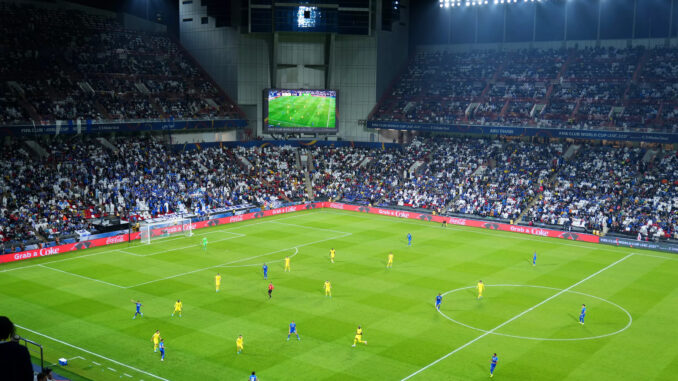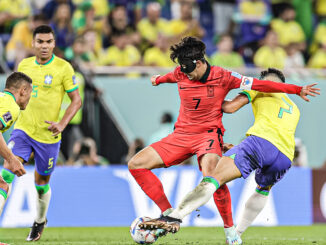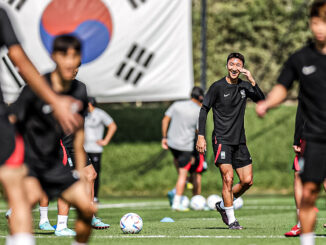
Bigger is better, or so Gianni Infantino will have you believe.
The FIFA president’s announcement that the Club World Cup would expand to 32 teams by 2025 was met with divided opinion to say the least.
A week ahead of what is planned to be the penultimate edition in its current guise, it’s a perfect time to look back, as well as forward, to how a larger, cyclical Club World Cup can help, or potentially hinder Asian football.
The global showpiece that no one watches
While many may snigger at Gianni Infantino’s assertion that the 2022 FIFA World Cup was the “best in history”, the positives were undeniable; from the underdog tales of Saudi Arabia and Japan overcoming the odds against former and present world champions, to Morocco’s fairy-tale run to the semi-finals, the narrative would have undoubtedly been a lot weaker without the inclusion of those from outside the so-called elite of Europe and South America.
It’s by no surprise then, that FIFA took this very moment to reveal their plans to revamp the Club World Cup, a competition widely derided as a mere afterthought in the international calendar, even within Asia, a Confederation that has regularly propped up its moderate success through organisation and engagement.
The fact we had to wait until the 16th of December to know when, where or even if we were going to have a 2022 edition speaks volumes to the decline of an event that has continually struggled to live up to its “world championship” headline.
While Asia has seen their performances improve over the last decade, including eight semi-final and two final appearances in seven years, the condensed format, and lack of buzz around the event, has rendered it little more than a glitzy, highly predictable friendly tournament.
Even as the dominant force, Europe largely play in third gear – indifferent by their inclusion, yet still consistently finalists at each and every edition in its current format, winning all but one of the resulting titles.
The prospect of extending such an unloved footnote in world football’s calendar isn’t exactly an encouraging one. The track record in delivering it has an equally chequered past.
Following a reasonably successful inaugural tournament in 2000, plans to expand the tournament to 12 participants in 2001 evaporated under the collapse of FIFA’s marketing partners International Sport and Leisure (ISL). Thoughts to resurrect the idea of expansion, twenty years later, were similarly hit by misfortune, succumbing to an unprecedented global pandemic.
The format over the past two decades has instead gravitated to a tightly condensed two-week competition that was born out of appeasement rather than what was best for the world game.
The first week largely plays out behind closed doors as a preliminary exercise for lower ranked Confederations, before the big boys from Europe and South America fly in for a brief three or four days of back-to-back semi-final and final action.
Blink and you’d miss it; very much the intention of at least the visiting Europeans, all keen to rush home to continue their domestic season the week after.
The Club World Cup has become little more than FIFA’s end of year charity gala. If changing that perception is a priority of football’s governing body, they must address how they can turn this blot on the schedule into a main international event that competes with its successful continental cousins.
Changing perceptions
The power imbalance between European club football and the rest of the world is growingly apparent with every given year. Despite the improving stocks of talent being developed in Asia, Africa and North America, as the World Cup in Qatar acutely attested to, the vast majority will always look to move to Europe to succeed in their career.
So, won’t an expanded Club World Cup, only show up further inequalities? Not necessarily.
The biggest critique laid at the door of the Club World Cup is its predictability; that Europe or South America win it every year. While that record will likely remain for some time, an expanded tournament doesn’t mean it needs to feel so imbalanced.
When it comes to the international game, a lack of parity is often embraced rather than scrutinised, despite Europe and South America having a similar stranglehold over the championship trophy.
Following last month’s World Cup, no one was left complaining at the standard of Japan, Morocco or the United States; there were even viral trends celebrating the improvement of Asian football from global viewers who were fresh and engaged to new names and cultures.
That noticeable improvement, which added to the wider narrative of the tournament, didn’t need an Asian team to win the title, or even get close to winning it, it just needed greater exposure to the watching public.
Embed from Getty ImagesWhile critics rightly point out that Asia needs to do more to close the gap at international level, performances at the World Cup are evident that regular participation at such a tournament has seen standards rise; something that could be replicated in the club game.
On the flip side, few are likely to use poor campaigns put out by Qatar, Canada, Costa Rica or Ghana as evidence of the wider state of their continent’s football; in the same manner no macro assessment of European football has been laid at the door of failed campaigns by Serbia, Denmark or Wales.
The larger the expansion, the more intrigue, nuance and unpredictability we can experience.
Even if we were to engage those that fear we’ll see a European only latter stage, this would exactly fit the purpose of the Club World Cup; in establishing the very best of global club football. While at present, two victories see a club named world champions after a few days, a move for expansion would hold more rigour, and therefore credibility for the eventual victors.
The initial proposition for the expanded Club World Cup in China, included 12 European teams (half of the competition); champions for the last four years from the UEFA’s top two tier competitions, plus the runners up from the UEFA Champions League over that period.
A potential knockout stage that features the likes of Real Madrid, Chelsea, Bayern Munich, Liverpool, Manchester City, PSG, Sevilla, Tottenham Hotspur and Villareal ticks all the boxes for European engagement. Put this alongside the prospect of seeing the likes of Flamengo, Monterrey, Al-Ahly and Urawa Reds potentially creating an upset or two along the way, and we finally could give club football an opportunity to rival the international game.
While it could be argued that a four-year period is a different beast entirely for club level football, it does propose a potential new direction for club football, built around an eagerly anticipated event, as the World Cup has already brought to international football. Just because club football focuses on a yearly turnaround currently, doesn’t mean it can’t embrace and succeed under a cyclical one.
Embed from Getty ImagesWhat this could mean for Asian football is potentially era-defining. A high-profile, high engagement platform, taking place cyclically every four years would give the security of much needed investment value and worldwide exposure to grow football nationally and across the continent.
The AFC Champions League, having fallen into similar disarray over the last few years following COVID, would once again give an avenue to the pinnacle of the game, that would promote reliable focus and strategic planning opportunities for the Asian elite to compete on the global stage.
The almost cameo-like appearances of Cristiano Ronaldo and others, could in turn become worthwhile career moves of significance, if participation at a Club World Cup became the new benchmark of perceptual success moving forward.
It’s not a significant leap of imagination to envisage Al-Nassr becoming the Morocco of club football, following a month long spectacle, with wall-to-wall coverage, crucially outside the typical European season calendar.
Engineering such success will probably fall on the ambitions of players and interest of fans initially; with both European clubs and UEFA unlikely to embrace an elongated competition, given the lack of TV rights and extra playing time away from the domestic game at play.
The tournament’s success will inevitably come down to money; FIFA’s top priority with this expansion – but with that comes the potential for increased engagement and trickle-down success to developing nations and confederations.
Last hurrah for the old format
For now, 2025 seems a distant dream. Heading into the likely penultimate version of the current iteration over the coming week, however, Asian hopes seem ever more subdued than they have been before.
For the first time in seven years, the tournament is being played outside of the continent, while a shift in the continental club calendar, means Saudi champions Al-Hilal are thrust forward to their second successive representation as 2021 AFC Champions League winners.
The Saudi giants, while remaining in the race with the top of the table domestically, are far from the domineering side that has dominated Asia over the last few years. Ramon Diaz’s triumphant comeback in clinching the domestic title last year was impressive; however, it probably spoke more of Al-Ittihad’s eventual collapse than the Blue Waves’ herculean efforts.
That realisation has spilt over to the new season, with Al-Shabab, and team of the moment Al-Nassr sitting in centre stage; one part of a dual concern of Hilal’s with the knockout stages of the current Champions League season set to kick off in Qatar, shortly after they return from the Club World Cup.
An invitation back to the Club World Cup then, where they have lost four from six matches in the past four years, will not necessarily be a welcome distraction.
While the coming week struggles to keep pulses racing and worldwide attentions on the host nation of Morocco, it does remind us of the reforms that still need to come if club football can ever go truly go global.
With the promise of expansion in 2025 to come, FIFA have in their hands the potential to both please an impatient European audience and grow the global game at the same rate.
While generating cash reserves for the FIFA coffers may notionally be the priority of Infantino and co, they may well have stumbled across the future levelling of the field that could go on to define the next half century of world football.




